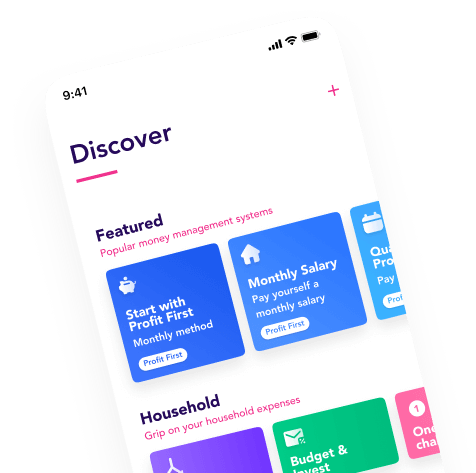
We have subscriptions for everything these days. Dutch households have an average of about 14, and we pay hundreds of euros for them every month. Two or three streaming services, a museum card, that app for listening to podcasts and music, the gym, the lottery, meal boxes, a leased car or swap bike. Maybe you even have subscriptions for your underwear, razors or perfume. And that's not even counting your internet, TV and phone. With so many subscriptions it's hard to keep a grip on what's going on and what you're spending exactly. Fortunately, with these five tips you will regain that grip quickly!
Tip 1: Make an overview
Lack of control is actually always first caused by lack of insight and overview. So first of all put everything in a row, so you know what you pay in subscriptions. Go through your bank statements, search for "subscription" in your mailbox and keep track of all the things that automatically arrive on your doorstep.
On the Nibud website (NL) you will find the link to a handy sample list, where you can easily keep track of the costs of your current subscriptions.
Tip 2: Cancel unnecessary subscriptions
The logical next step is then to take a good look at whether there are any subscriptions that you don't use, or that you no longer need. Perhaps you don't read the paper anymore, you have 85 automatically sent underpants or you never go to that expensive gym. You will probably find this out quickly when you make an overview of what is running.
You can then see whether you can cancel them immediately or whether you will be stuck with them for a while. Some subscriptions are for a specific period. For example, with a notice period of one month or one year. In that case it is useful to put a reminder in your calendar for the moment when you can cancel. That way you avoid accidental automatic renewal and being stuck with it even longer.
Tip 3: Switch to cheaper alternatives
This is also a good time to see if you can get a cheaper deal elsewhere. You often check this annually for your health insurance, but don't forget that your 13 other subscriptions could also be much cheaper!
Tip 4: Think carefully about new subscriptions
Are you thinking about a new subscription? Then check if a package deal is available. For example, these days many phone subscriptions allow you to get a free subscription to a streaming service or podcast app. The same goes for internet and television. In addition, check carefully whether it is really necessary. Calculate, for example, what it costs per year. A few tens a month may not seem like a lot, but on an annual basis it can be quite a lot.
If you have a new contract, it is important to put this in your calendar. Especially if it is automatically renewed every year, it is good to receive a notification of this in time. You can then check whether you still need it, or check if you can get it cheaper elsewhere.
Tip 5: Incorporate everything into your money plan
If all goes well, you now know exactly which subscriptions are running. The last step is then to incorporate this into your money plan. Create flows and triggers for it, process the amounts in the jar for your fixed expenses, or make a separate jar for it. This way you make sure you always have enough money for the direct debits and you never go a day without a series, podcast or meal.
Have you also cancelled one or more subscriptions? Then use Flow to automatically send the amount you now have 'left over' to your investment account or savings jar. That way you save extra, without even realising it!
